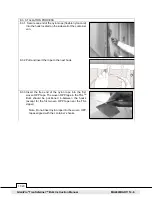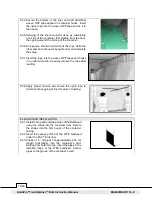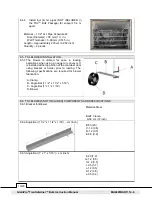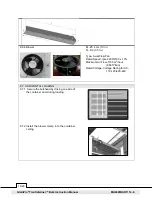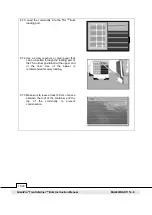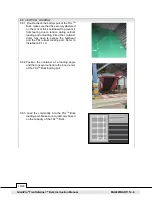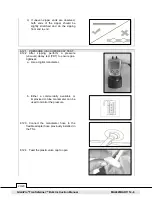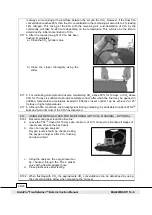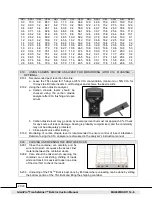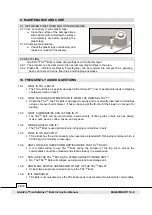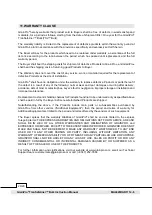
25/29
GrainPro
®
TranSafeliner™ Bulk Instruction Manual
MA4045RAD1114-6
c) If a mechanical inverter is not available, a
makeshift inverter can be made using
sandbags or other improvised techniques.
The cylinder should be inverted with its top
resting on one sandbag and the bottom
end resting on a pile of two or three
sandbags high.
d) A standard high-pressure hose (optional;
available from GrainPro
®
) should be
connected to the cylinder. This hose
should be guaranteed to withstand a
pressure of 88 atmospheres (1,300 psi, or
92 kg/cm
2
). Ensure that all connections
are made properly, and gaskets are
placed where they are required. The high-
pressure hose should have a length of
about 2-meter.
e) Open the cylinder valve. Adjust the
opening of the valve until the sound of
liquid passing through the hose is
observed. The liquid CO
2
flushes into the
TSL Bulk and will push the air upward
starting from the bottom, creating a piston
effect, until the air is totally replaced. The
opening through the zipper will serve as an
outlet for the displaced air.
f) Open a section of the zipper to serve as
an outlet to discharge O
2
when flushing.
g) Flushing (emptying of the cylinder) depends on the amount of CO
2
to be applied. Emptying
one 22 kg cylinder without using a pressure regulator should only take about 20 to 30 minutes.
If the pressure hose or the inlet valve gets blocked with ice, this is an indication that the CO
2
is being released too quickly. If this happens the cylinder should be closed until the ice melts,
and then the cylinder tap should be re-opened and adjusted to reduce the flow.
h) An additional indication that the gas is being released too quickly is when the TSL
TM
Bulk
begins to balloon out because pressure begins to build up inside. If this happens, the gas flow
should be decreased at the cylinder tap until the rate of air being expelled through the outlet
port is about the same as the rate of CO
2
entering the liner.
i) If necessary, for small-scale applications and the cylinder is not inverted, weighing scales may
be used to control the weight of the gas delivered. In this case the gas is released slowly
through a pressure gauge which can be adjusted to control the flowrate.
8.17.3. Since CO
2
is heavier than air, the air in the TSL
TM
Bulk will be displaced upwards and will be
lifted out of the container through the outlet port. Complete displacement is not possible as there

